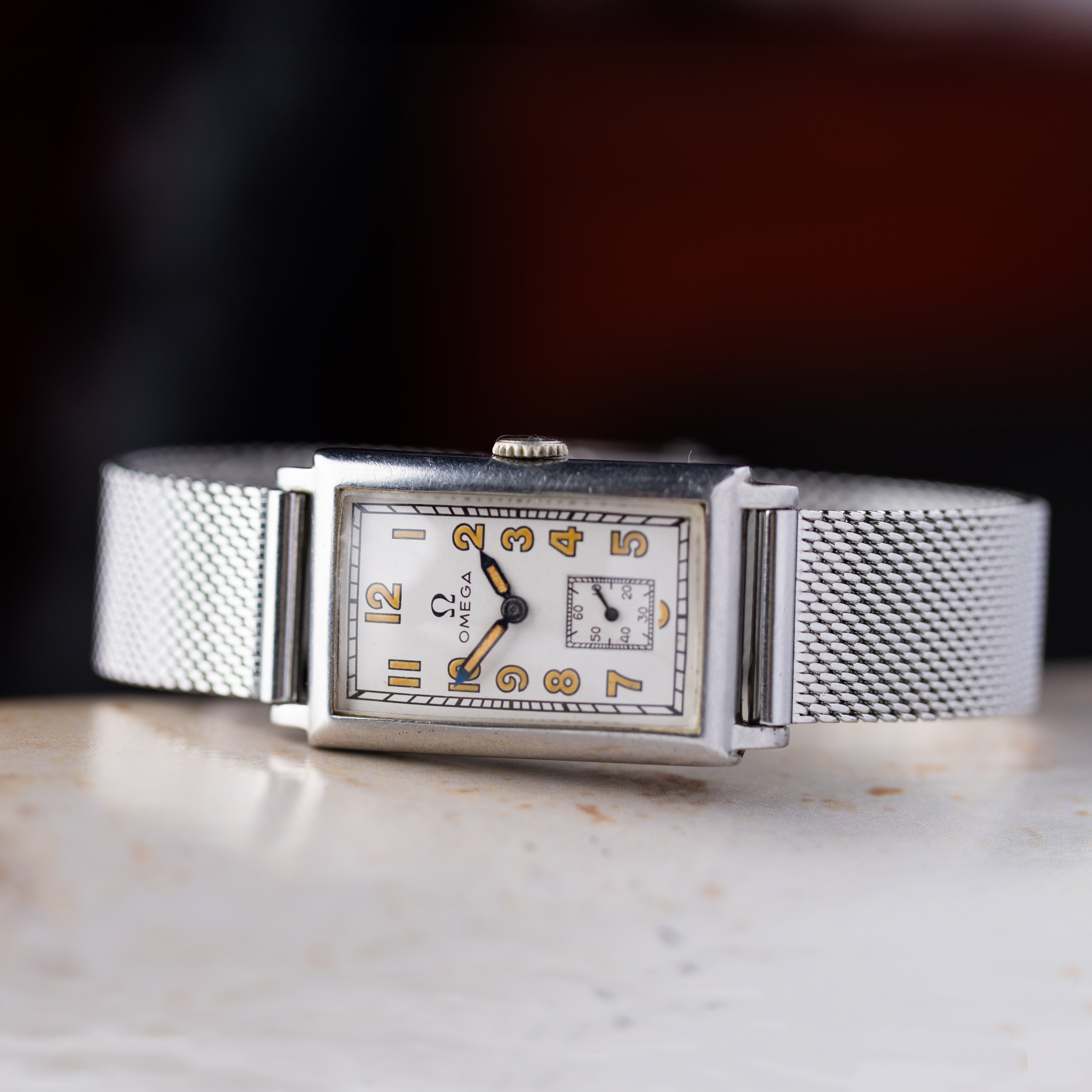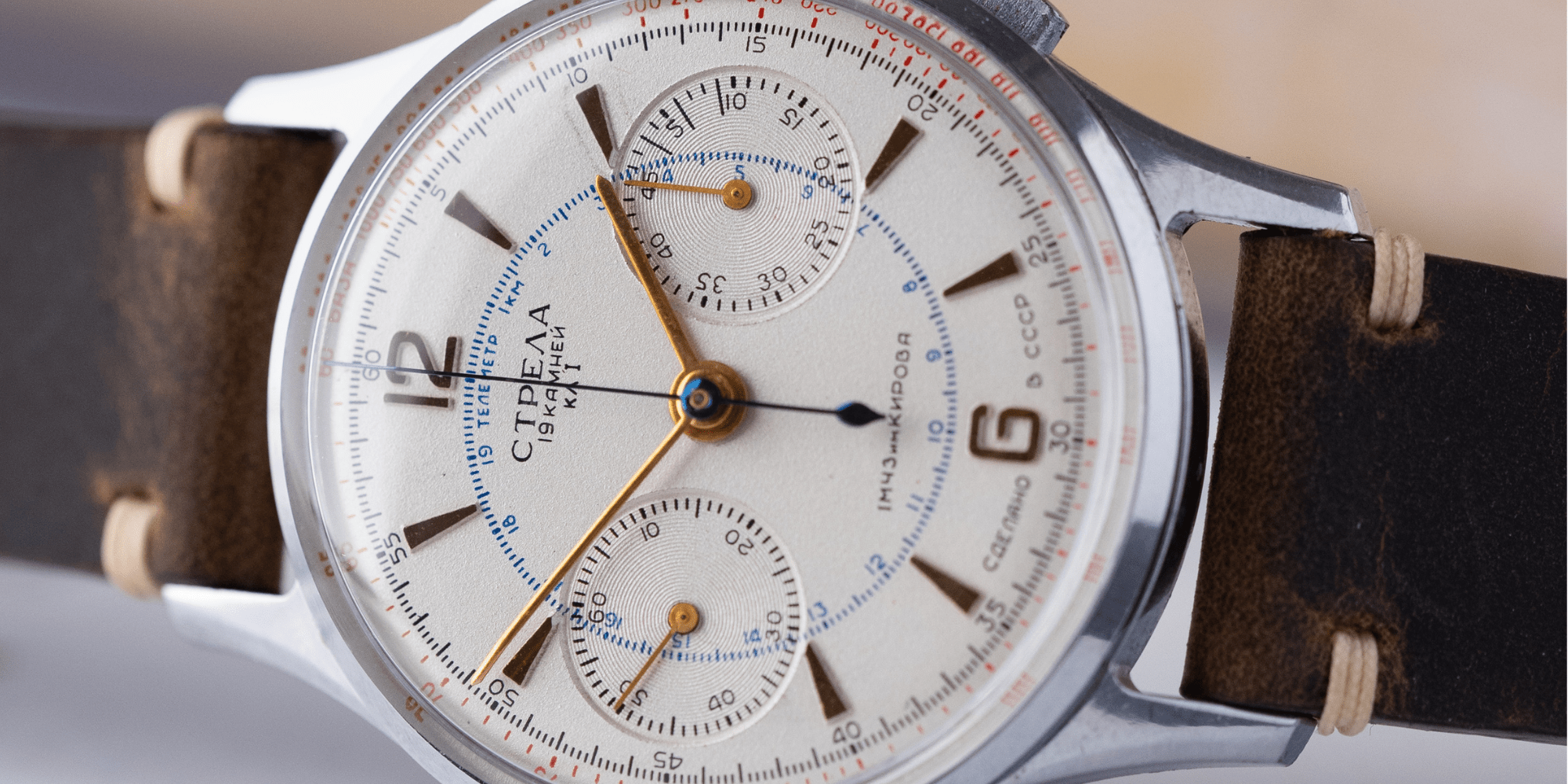The Strela watch holds a legendary status in horological history as the first chronograph produced in the USSR. Beyond its innovative engineering and elegant design, the Strela became a symbol of Soviet technical achievement during the Space Race era. This article dives into the origins of the Strela, its features, and its extraordinary journey into space.
Origins of the Strela Chronograph
The Strela, which translates to "Arrow" in Russian, was introduced in 1959 by the First Moscow Watch Factory (Poljot). At the time, the Soviet Union had ambitions to match—and surpass—the advancements in horology made by Swiss manufacturers. Chronographs, with their complex movements and precise timing capabilities, were essential for scientific, military, and later, space exploration endeavors.
The Strela succeeded the earlier Kirovskie chronographs and used the caliber 3017 movement. This manual-winding column-wheel chronograph movement was based on the Swiss Venus 150, which the USSR had acquired the rights to produce domestically. With 19 jewels and a power reserve of approximately 45 hours, the 3017 movement was robust, reliable, and precise. The Strela also featured a 45-minute chronograph counter and a tachymeter scale for speed calculations, essential tools for pilots and cosmonauts alike.

The Strela in Space
The Strela's historical significance soared—literally—on March 18, 1965, when it accompanied cosmonaut Aleksei Leonov on the world's first spacewalk (EVA, or extravehicular activity). Leonov’s mission, part of the Voskhod 2 program, required tools that could withstand the harsh environment of space while ensuring precise timekeeping.
During the 12-minute EVA, Leonov became the first human to step into the vacuum of space, tethered to his spacecraft. The Strela proved its worth by enduring the extreme conditions of zero gravity, intense sunlight, and rapid temperature fluctuations. This successful mission marked a significant milestone in both space exploration and Soviet horology.
Unlike the Swiss Omega Speedmaster, which NASA adopted for its missions, the Strela was not initially marketed as a "space watch." However, its performance during Leonov's groundbreaking spacewalk secured its place in watchmaking and space history.

Design and Legacy
The Strela's design is a testament to Soviet industrial aesthetics, balancing functionality with understated elegance. Early models, like the Strela 3017, featured a 36mm stainless steel case, clean white or silver dials, and slender, legible hands. The inclusion of Cyrillic script on the dial added a distinctly Soviet character, often spelling "Сделано в СССР" ("Made in USSR").
Several models of the Strela were produced between 1959 and 1979, including those for civilian and military use. Military-issue Strela watches often featured specific markings, while civilian models became popular for their reliability and affordability.
In 1979, the Strela line transitioned to a new caliber, the 3133, marking the end of the 3017 era. The new movement was bulkier and no longer based on the Venus design, but it continued the legacy of Soviet chronographs.

The Strela Today
Today, vintage Strela watches are highly sought after by collectors, both for their technical significance and their association with space exploration. Well-preserved examples of the original 3017 models command premium prices in the vintage market. Additionally, modern reissues of the Strela, produced under the Strela brand, pay homage to the original design while incorporating modern movements.
The Strela is more than just a watch; it is a time capsule that reflects the ingenuity and ambition of the USSR during the mid-20th century. Its role in Aleksei Leonov's historic spacewalk cements its legacy as a horological icon, reminding us of the era when the race to the stars captured the imagination of the entire world.
Conclusion
The Strela watch is a remarkable blend of Soviet engineering, functionality, and design. As the first chronograph produced in the USSR and one of the first timepieces to accompany humans into the harsh environment of space, it stands as a testament to human creativity and determination. Whether you're a collector, a space enthusiast, or simply a lover of vintage watches, the Strela remains a fascinating piece of history worth celebrating.


